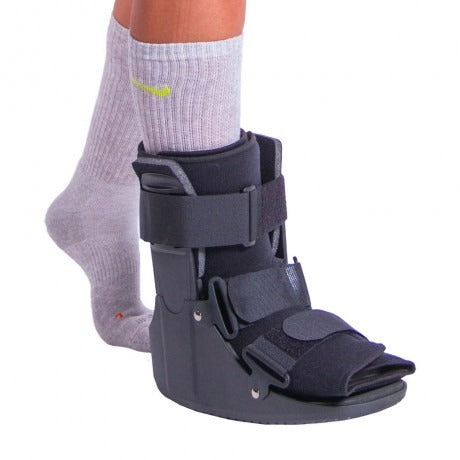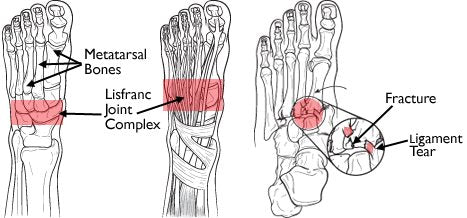Lisfranc Foot Surgery and Recovery Time
Thankfully, a break or dislocation of the bones of the so-called “Lisfranc joint” (the midfoot region) is not a very common foot injury. Unfortunately, when this midfoot injury does occur, especially if the bones or the broken ends of bones have shifted apart (a displaced fracture), Lisfranc surgery will likely be necessary to repair the damage, along with other Lisfranc orthopedic treatments.
And that is just the start of a Lisfranc injury recovery. Surgery will be followed by a long period of immobility when an immobilizing boot will be needed to allow the foot to heal. Lisfranc ligament surgery is also often required when a full tear of said ligament occurs to stabilize the foot so the ligament has a chance to heal.
Generally speaking, the sooner after the injury occurs that the surgery takes place, the greater the chances for a successful surgery. Failing to treat this condition can lead to chronic pain or arthritis pain that is debilitating in nature.
Lisfranc fracture surgery seeks to move the components of the Lisfranc injury back to their original placement via the use of screws, wires, pins, plates and the like. Some studies have shown fixation via screws to be more successful than fixation via K-wire. In some cases, this hardware will need to be removed months down the road after the Lisfranc joint has had time to heal.
The healing process after Lisfranc injury surgery is a lengthy one. To start, for a period of six to eight weeks one will have to wear a cast boot and not putting any weight on the foot. This is then followed by several more weeks of limited weight-bearing with the use of a walking boot.

Even when one switches to shoes, arch support insoles will be needed for support. Another surgical option that is sometimes pursued from the get-go but more often it is pursued after the fixation method has failed or has resulted in midfoot arthritis is Lisfranc fusion surgery. In this type of Lisfranc injury surgery, the surgeon will remove cartilage and fuse or “weld” the problematic bones together with the help of hardware and bone grafting so that they form one single bone. (Learn more about Lisfranc surgical procedures.)
The downside of Lisfranc fusion surgery is that it can limit one’s range of motion. But sadly, it involves a similar lengthy recovery period including long stretches of relative immobilization.











